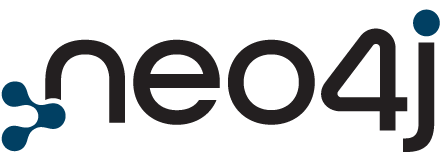DBMS > Amazon Neptune vs. MariaDB vs. RRDtool
System Properties Comparison Amazon Neptune vs. MariaDB vs. RRDtool
Please select another system to include it in the comparison.
| Editorial information provided by DB-Engines | ||||||||||||||||||||||||||||||||||||||||||||||||||||||||||||||||||||||||||||||||||||||||||||||||||
| Name | Amazon Neptune Xexclude from comparison | MariaDB Xexclude from comparison | RRDtool Xexclude from comparison | |||||||||||||||||||||||||||||||||||||||||||||||||||||||||||||||||||||||||||||||||||||||||||||||
| Description | Fast, reliable graph database built for the cloud | MySQL application compatible open source RDBMS, enhanced with high availability, security, interoperability and performance capabilities. MariaDB ColumnStore provides a column-oriented storage engine and MariaDB Xpand supports distributed SQL. | Industry standard data logging and graphing tool for time series data. RRD is an acronym for round-robin database. | |||||||||||||||||||||||||||||||||||||||||||||||||||||||||||||||||||||||||||||||||||||||||||||||
| Primary database model | Graph DBMS RDF store | Relational DBMS | Time Series DBMS | |||||||||||||||||||||||||||||||||||||||||||||||||||||||||||||||||||||||||||||||||||||||||||||||
| Secondary database models | Document store Graph DBMS Spatial DBMS | |||||||||||||||||||||||||||||||||||||||||||||||||||||||||||||||||||||||||||||||||||||||||||||||||
|
|
|
| |||||||||||||||||||||||||||||||||||||||||||||||||||||||||||||||||||||||||||||||||||||||||||||||
| Website | aws.amazon.com/neptune | mariadb.com mariadb.org | oss.oetiker.ch/rrdtool | |||||||||||||||||||||||||||||||||||||||||||||||||||||||||||||||||||||||||||||||||||||||||||||||
| Technical documentation | aws.amazon.com/neptune/developer-resources | mariadb.com/kb/en/library | oss.oetiker.ch/rrdtool/doc | |||||||||||||||||||||||||||||||||||||||||||||||||||||||||||||||||||||||||||||||||||||||||||||||
| Developer | Amazon | MariaDB Corporation Ab (MariaDB Enterprise), MariaDB Foundation (community MariaDB Server) | Tobias Oetiker | |||||||||||||||||||||||||||||||||||||||||||||||||||||||||||||||||||||||||||||||||||||||||||||||
| Initial release | 2017 | 2009 | 1999 | |||||||||||||||||||||||||||||||||||||||||||||||||||||||||||||||||||||||||||||||||||||||||||||||
| Current release | 11.5.2, August 2024 | 1.8.0, 2022 | ||||||||||||||||||||||||||||||||||||||||||||||||||||||||||||||||||||||||||||||||||||||||||||||||
| License | commercial | Open Source | Open Source | |||||||||||||||||||||||||||||||||||||||||||||||||||||||||||||||||||||||||||||||||||||||||||||||
| Cloud-based only | yes | no | no | |||||||||||||||||||||||||||||||||||||||||||||||||||||||||||||||||||||||||||||||||||||||||||||||
| DBaaS offerings (sponsored links) Providers of DBaaS offerings, please contact us to be listed. | STACKIT MariaDB offers MariaDB in a fully managed version in enterprise grade, 100% GDPR-compliant. | |||||||||||||||||||||||||||||||||||||||||||||||||||||||||||||||||||||||||||||||||||||||||||||||||
| Implementation language | C and C++ | C | ||||||||||||||||||||||||||||||||||||||||||||||||||||||||||||||||||||||||||||||||||||||||||||||||
| Server operating systems | hosted | FreeBSD Linux Solaris Windows | HP-UX Linux | |||||||||||||||||||||||||||||||||||||||||||||||||||||||||||||||||||||||||||||||||||||||||||||||
| Data scheme | schema-free | yes | yes | |||||||||||||||||||||||||||||||||||||||||||||||||||||||||||||||||||||||||||||||||||||||||||||||
| Typing | yes | yes | Numeric data only | |||||||||||||||||||||||||||||||||||||||||||||||||||||||||||||||||||||||||||||||||||||||||||||||
| XML support | no | yes | no | |||||||||||||||||||||||||||||||||||||||||||||||||||||||||||||||||||||||||||||||||||||||||||||||
| Secondary indexes | no | yes | no | |||||||||||||||||||||||||||||||||||||||||||||||||||||||||||||||||||||||||||||||||||||||||||||||
| SQL | no | yes | no | |||||||||||||||||||||||||||||||||||||||||||||||||||||||||||||||||||||||||||||||||||||||||||||||
| APIs and other access methods | OpenCypher RDF 1.1 / SPARQL 1.1 TinkerPop Gremlin | ADO.NET JDBC ODBC Proprietary native API | in-process shared library Pipes | |||||||||||||||||||||||||||||||||||||||||||||||||||||||||||||||||||||||||||||||||||||||||||||||
| Supported programming languages | C# Go Java JavaScript PHP Python Ruby Scala | Ada C C# C++ D Eiffel Erlang Go Haskell Java JavaScript (Node.js) Objective-C OCaml Perl PHP Python Ruby Scheme Tcl | C C# Java JavaScript (Node.js) Lua Perl PHP Python Ruby | |||||||||||||||||||||||||||||||||||||||||||||||||||||||||||||||||||||||||||||||||||||||||||||||
| Server-side scripts | no | yes | no | |||||||||||||||||||||||||||||||||||||||||||||||||||||||||||||||||||||||||||||||||||||||||||||||
| Triggers | no | yes | no | |||||||||||||||||||||||||||||||||||||||||||||||||||||||||||||||||||||||||||||||||||||||||||||||
| Partitioning methods | none | several options for horizontal partitioning and Sharding | none | |||||||||||||||||||||||||||||||||||||||||||||||||||||||||||||||||||||||||||||||||||||||||||||||
| Replication methods | Multi-availability zones high availability, asynchronous replication for up to 15 read replicas within a single region. Global database clusters consists of a primary write DB cluster in one region, and up to five secondary read DB clusters in different regions. Each secondary region can have up to 16 reader instances. | Multi-source replication Source-replica replication | none | |||||||||||||||||||||||||||||||||||||||||||||||||||||||||||||||||||||||||||||||||||||||||||||||
| MapReduce | no | no | no | |||||||||||||||||||||||||||||||||||||||||||||||||||||||||||||||||||||||||||||||||||||||||||||||
| Consistency concepts | Immediate Consistency | Immediate Consistency | none | |||||||||||||||||||||||||||||||||||||||||||||||||||||||||||||||||||||||||||||||||||||||||||||||
| Foreign keys | yes | yes | no | |||||||||||||||||||||||||||||||||||||||||||||||||||||||||||||||||||||||||||||||||||||||||||||||
| Transaction concepts | ACID | ACID | no | |||||||||||||||||||||||||||||||||||||||||||||||||||||||||||||||||||||||||||||||||||||||||||||||
| Concurrency | yes | yes | yes | |||||||||||||||||||||||||||||||||||||||||||||||||||||||||||||||||||||||||||||||||||||||||||||||
| Durability | yes | yes | yes | |||||||||||||||||||||||||||||||||||||||||||||||||||||||||||||||||||||||||||||||||||||||||||||||
| In-memory capabilities | yes | yes | ||||||||||||||||||||||||||||||||||||||||||||||||||||||||||||||||||||||||||||||||||||||||||||||||
| User concepts | Access rights for users and roles can be defined via the AWS Identity and Access Management (IAM) | fine grained access rights according to SQL-standard | no | |||||||||||||||||||||||||||||||||||||||||||||||||||||||||||||||||||||||||||||||||||||||||||||||
More information provided by the system vendorWe invite representatives of system vendors to contact us for updating and extending the system information, | ||||||||||||||||||||||||||||||||||||||||||||||||||||||||||||||||||||||||||||||||||||||||||||||||||
Related products and servicesWe invite representatives of vendors of related products to contact us for presenting information about their offerings here. | ||||||||||||||||||||||||||||||||||||||||||||||||||||||||||||||||||||||||||||||||||||||||||||||||||
| More resources | ||||||||||||||||||||||||||||||||||||||||||||||||||||||||||||||||||||||||||||||||||||||||||||||||||
| Amazon Neptune | MariaDB | RRDtool | ||||||||||||||||||||||||||||||||||||||||||||||||||||||||||||||||||||||||||||||||||||||||||||||||
| DB-Engines blog posts | MariaDB strengthens its position in the open source RDBMS market PostgreSQL is the DBMS of the Year 2017 Big gains for Relational Database Management Systems in DB-Engines Ranking | Time Series DBMS are the database category with the fastest increase in popularity Time Series DBMS as a new trend? Zupee implements Amazon Neptune to detect Wallet transaction anomalies in real time Use Amazon Neptune Analytics to analyze relationships in your data faster, Part 1: Introducing Parquet and CSV import and export Using generative AI and Amazon Bedrock to generate SPARQL queries to discover protein functional information with UniProtKB and Amazon Neptune | Amazon Web Services Introducing the GraphRAG Toolkit How Coinbase provides trustworthy financial experiences through real-time user clustering with Amazon Neptune provided by Google News MariaDB CEO on database company regaining its mojo MariaDB reboots DBaaS plans with open source at the core Vector Storage, Indexing, and Search With MariaDB: What to Know About These New Features K1 Acquires MariaDB, a Leading Database Software Company, and Appoints New CEO MariaDB’s next move is a new CEO and a bold future provided by Google News SQLi vulnerability in Cacti could lead to RCE (CVE-2023-51448) Figure 2: The web dashboard displaying base station status using... Critical IP spoofing bug patched in Cacti How to install Cacti SNMP Monitor on Ubuntu Cacti servers under attack by attackers exploiting CVE-2022-46169 provided by Google News | ||||||||||||||||||||||||||||||||||||||||||||||||||||||||||||||||||||||||||||||||||||||||||||||||
Share this page




